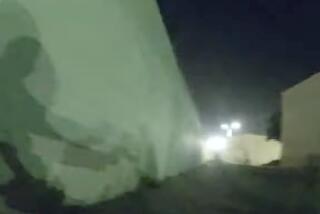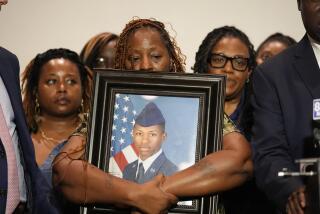‘I’m sad, and I’m mad’: Killing of Black cyclist by L.A. County deputies sparks outrage, grief
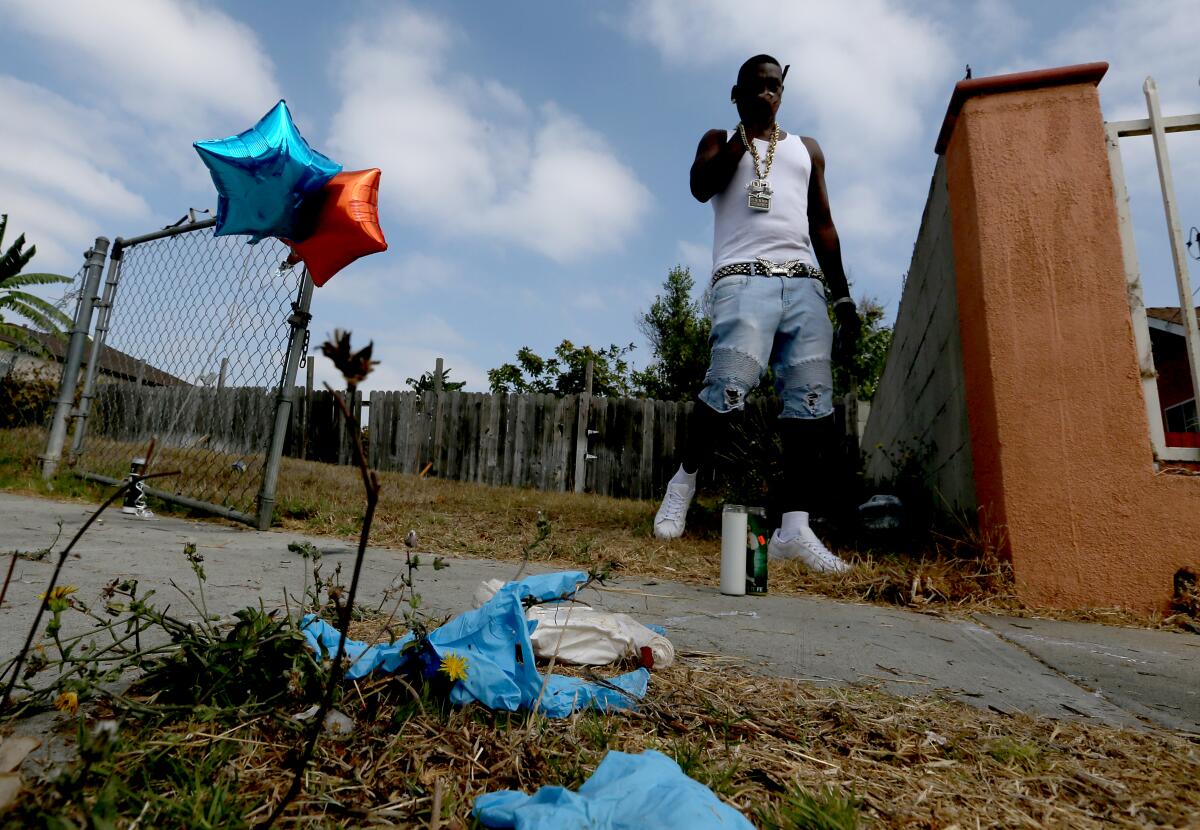
- Share via
Anthony Johnson spent Tuesday morning cleaning blood from the sidewalk where his nephew was shot and killed by two Los Angeles County sheriff’s deputies the day before.
It was a familiar scene for some in the Westmont neighborhood — Dijon Kizzee was the second man in three months to be killed by deputies within a block.
“Right now, I’m sad, and I’m mad at the same time,” Kizzee’s aunt Fletcher Fair said. “Why us? ... We are tired. We are absolutely tired.”
Many questions remain about what led to the shooting of Kizzee, 29, who relatives said was visiting the South L.A. neighborhood from his home in Lancaster.
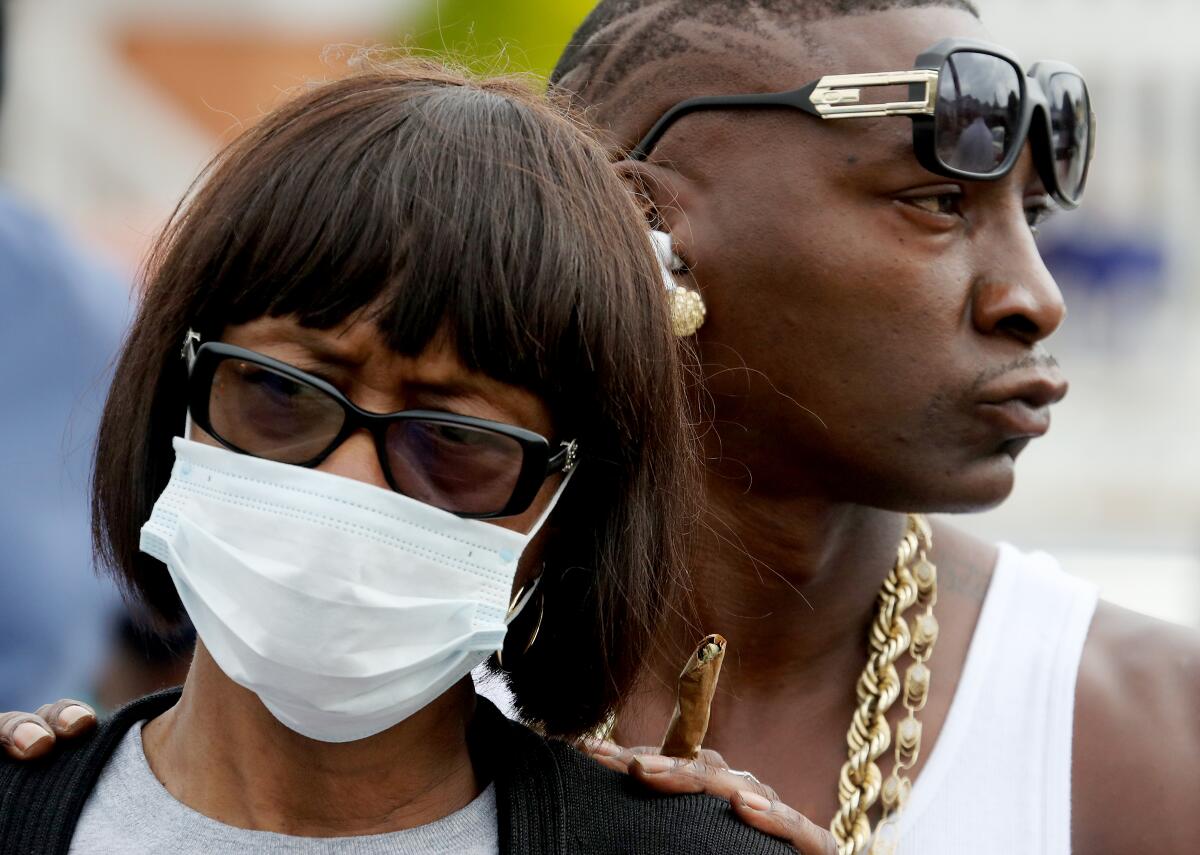
His death, ending a summer of protests over racism and police violence that have swept the nation, elicited fresh waves of outrage, as well as renewed calls for law enforcement transparency and the demand that those involved be arrested and prosecuted.
The circumstances of the incident, which officials say began when the deputies were trying to stop Kizzee as he was riding a bicycle, have led to questions about whether deadly force was warranted. The Sheriff’s Department also came under fresh criticism from activists for failing to outfit deputies with body cameras; the devices are scheduled to start rolling out at five stations in October.
The encounter Monday afternoon began when two deputies from the South Los Angeles station spotted a man, later identified by the coroner as Kizzee, riding a bicycle in violation of vehicle codes, said Lt. Brandon Dean. He said he didn’t know which codes were allegedly violated.
Deputies attempted to contact Kizzee, but he dropped the bicycle and ran north on Budlong Avenue for a block, with deputies in pursuit, Dean said. Deputies again tried to make contact in the 1200 block of West 109th Place, and Dean said Kizzee punched one of them in the face.
Kizzee then dropped a jacket he had been carrying, and a black handgun fell to the ground, officials said. The Sheriff’s Department said Tuesday evening that Kizzee “made a motion toward” the gun, and the deputies opened fire, killing him.
A grainy video of the incident obtained by The Times shows a physical altercation between Kizzee and the deputies before Kizzee tries to get away and falls to the ground. A wall and fencing obscures the full scene, including where Kizzee’s jacket falls, before the deputies open fire.
Dean said he did not know how many times Kizzee was shot. Sheriff’s officials said a handgun was recovered at the scene.
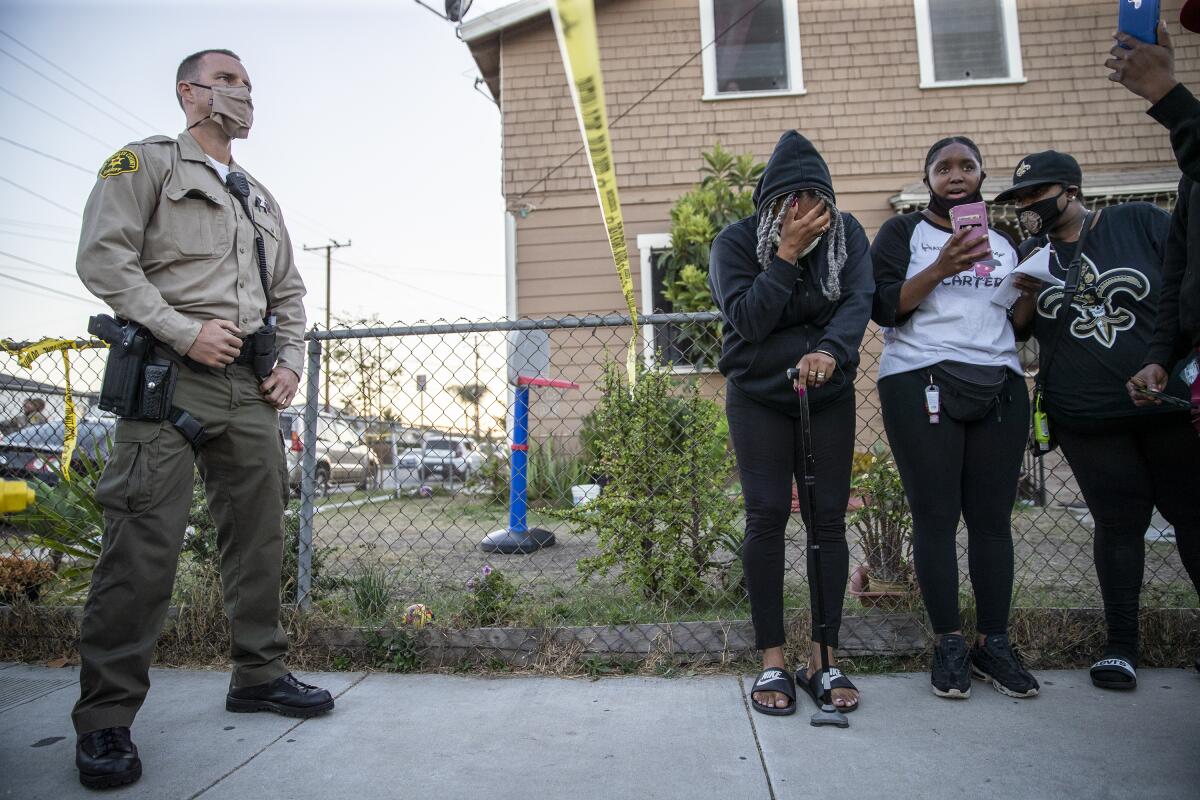
Ed Obayashi, a Plumas County deputy sheriff and national expert on the use of force, said the Sheriff’s Department will likely face questions about why deputies chased after the man over such a minor offense. While deputies have discretion in those circumstances, they “have to weigh the risk benefit of pursuing someone for a violation as minor as this,” he said.
He said it’s unclear what prompted the deputies to open fire.
“He drops this bundle of clothes, they see a gun — and we don’t know what happened after that except for the shooting,” he said. “We’re really short on facts here ... There’s, right now, obviously a lot of questions about this.”
Many in the community said the narrative is troubling.
“The deputies essentially executed a man riding his bicycle,” Najee Ali, a community activist, said Tuesday while standing with several of Kizzee’s relatives at the scene of the shooting. Balloons were tied to memorial candles on the sidewalk, marking the spot where Kizzee died.
“They’ll say he had a gun, but what they won’t say was that he was not armed with the gun. He did not point the gun,” Ali said. “There was no reason for deputies to shoot a running man.”
Sheriff Alex Villanueva on Tuesday expressed his condolences to Kizzee’s family, which he said includes a cousin who is a member of the Sheriff’s Department. But he criticized activists, who later that night marched from the site of the shooting to the sheriff’s station, for not protesting other homicides since the controversial deputy killing of Andres Guardado, 18, in June in Gardena.
One “was beaten to death in the restroom of a supermarket in Lancaster about a month ago,” Villanueva said. “That name is already forgotten by people. The people on the streets are not saying his name.”
Fifteen apparent gunshots can be heard in a recording of the Kizzee incident from a neighbor’s home security camera. Several witnesses said they heard at least a dozen gunshots and saw deputies continue to shoot Kizzee once he had fallen to the ground.
Alida Trejo, 52, said she heard between eight and 11 shots. She was sitting by her sewing machine when she looked out the window and saw a man being chased by a sheriff’s deputy.
Curious, she walked outside to see what was happening and saw the deputy struggling to arrest the man. Neighbors were yelling at the man not to resist and telling the deputy not to shoot.
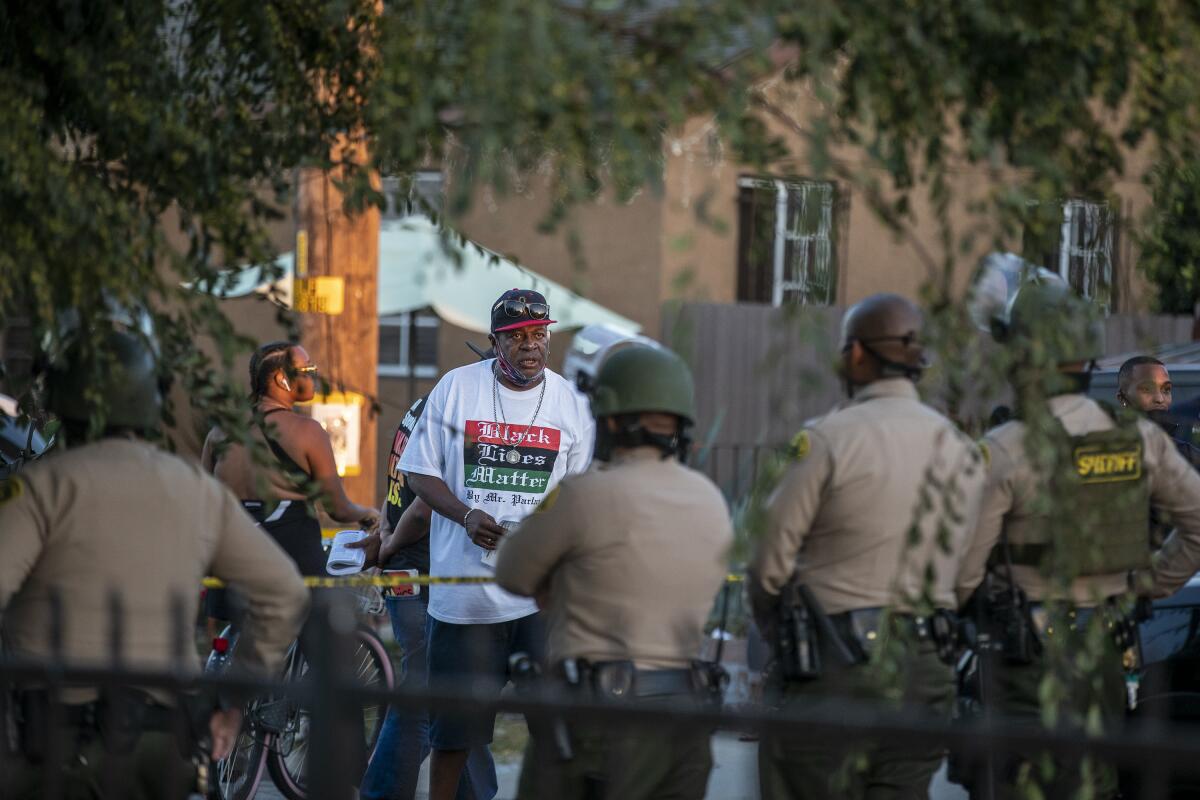
“They say the man punched the deputy, but I never saw that happen,” Trejo said.
Then, gunfire erupted.
Her 16-year-old daughter, Liz, was in her room taking a college prep course when she heard gunshots and her mother’s screams.
She ran outside and saw her mom yelling and crying hysterically, “They killed him. They killed him.”
Latiera Irby, 29, had stopped by her mother’s house Monday to get her hair done when Kizzee came up to her car — on the street where he was shot — as he was running from deputies.
“He said, ‘They’re coming to get me; they’re coming to get me,’” she said. Kizzee offered her money to drive him away. “I didn’t know who he was running from, so I told him no.”
Shortly after, she saw him get into a scuffle with a sheriff’s deputy. At one point, she said, the deputy backed away, then shot Kizzee. She said that deputy and another fired at Kizzee after he had fallen to the ground.
“He had nothing in his hands,” she said.
Irby said she did not sleep Monday night, unable to get the shooting out of her head.
“All I could see is that man on the ground and [them] still shooting him,” she said.
Timothy Ingram said authorities handcuffed Kizzee minutes after he was shot. He said officials refused to cover the body, despite neighbors pleading with them to do so.
Authorities, he said, didn’t take Kizzee’s body away until about midnight or 1 a.m. — more than nine hours after he was shot.
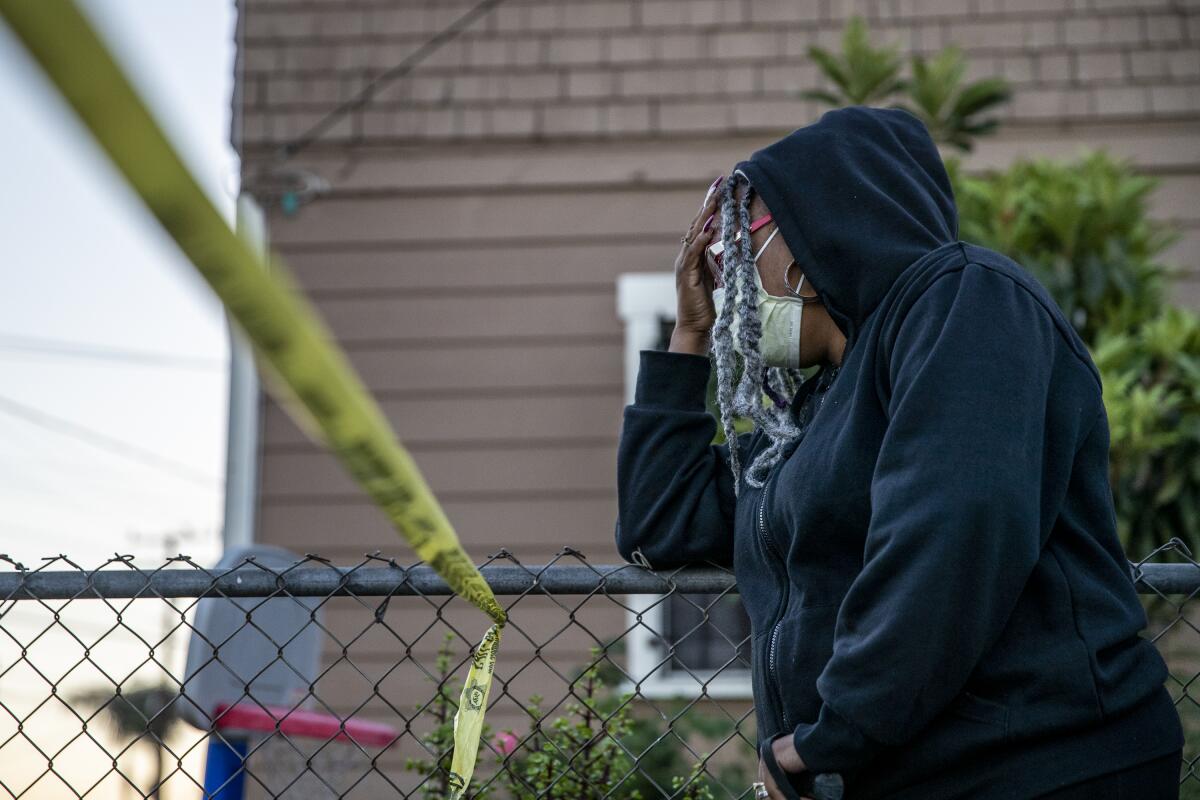
“I stayed here until they moved the body,” said Ingram, 52. “I was not going to leave. ... I felt it was my civic duty to watch over that man.”
In that same neighborhood, a young Latino man, Robert Avitia, was shot and killed by deputies just three months ago — a day after the death of George Floyd in Minneapolis. The Sheriff’s Department said Avitia, 18, was wanted on suspicion of murder and had pointed a handgun at officers.
Residents were reeling from the violence.
“I think we’re gonna need some damn counseling,” said Bobbie Lee, 51, referring to the neighbors, including her daughter, who had seen Kizzee’s body.
Tuesday morning, Johnson, Kizzee’s uncle, pointed to plastic gloves lying on the pavement, which he said had been left there by law enforcement.
“They shot him. They killed him. The least they could have done was clean up after themselves,” he said.
Kizzee’s aunt said he had come to the area to visit friends. Kizzee, an unemployed plumber, did not have children and is survived by his younger brother, who just graduated from high school, his family said. Johnson described Kizzee as someone who was “the life of the party” and said he last saw his nephew about a week ago in Palmdale.
“We kind of had a head bump, and I said, ‘I love you,’ and he said, ‘I love you back,’ and I told him to stay safe,” he said.
Times staff writer Luke Money contributed to this report.
More to Read
Sign up for Essential California
The most important California stories and recommendations in your inbox every morning.
You may occasionally receive promotional content from the Los Angeles Times.
